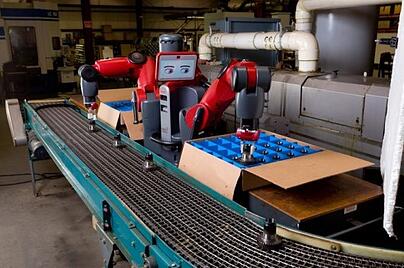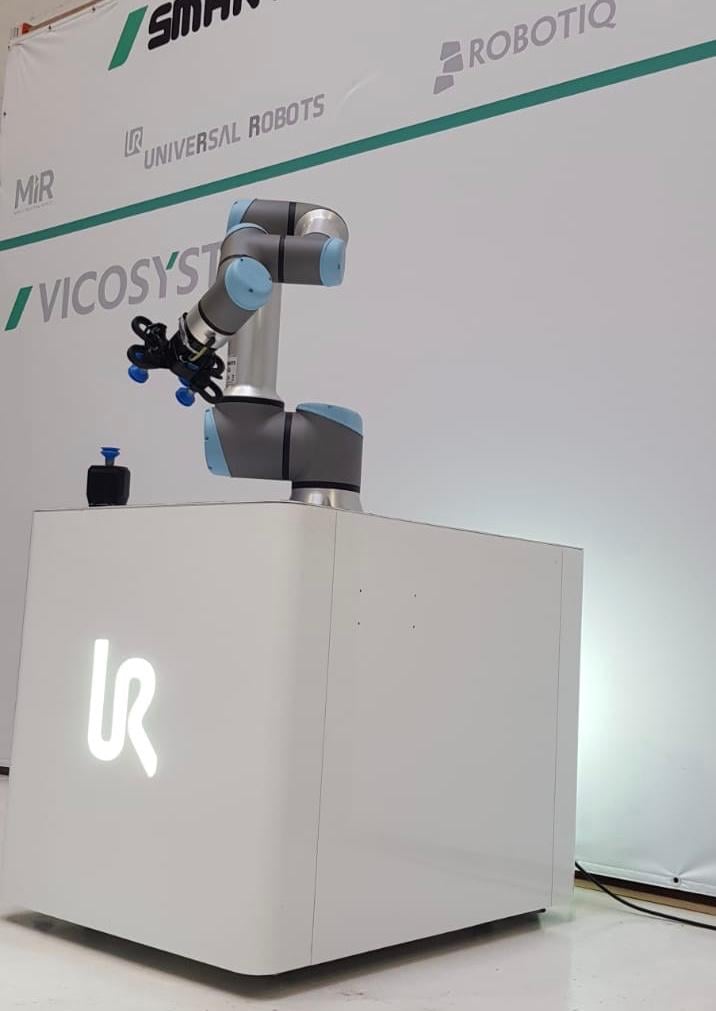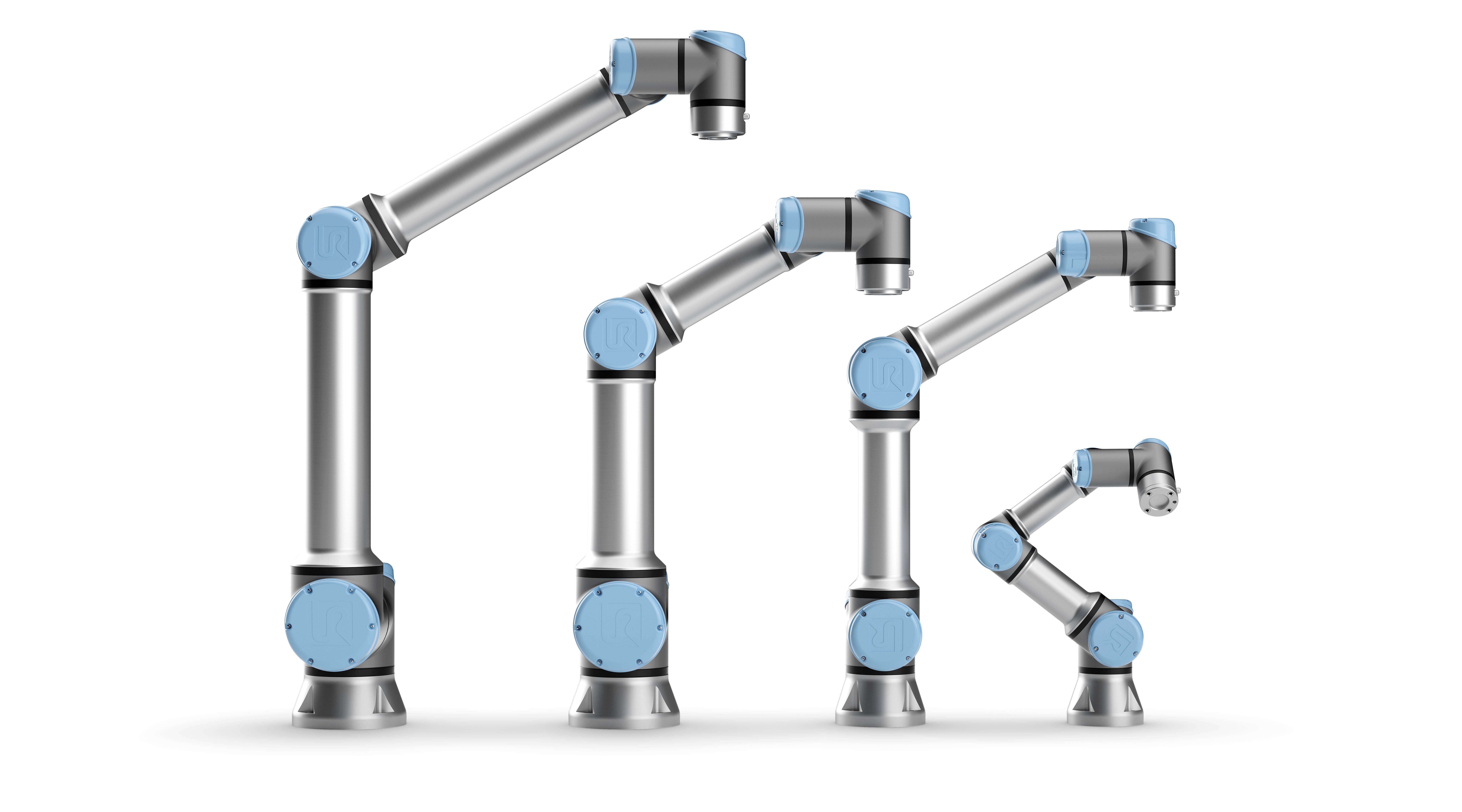Where Do Collaborative Robots Fit in a Robot Integrator's Business Model?

Posted on Apr 24, 2015 11:29 AM. 4 min read time
After talking to many robot integrators, I came to realize that collaborative robots are not yet automatically part of the solutions proposed by integrators. The reasons why are often the same for all integrators. Speed and accuracy/repeatability are the most common reasons cited. Of course, collaborative robots are new to the market, so integrators still need confirmation of the long term reliability of these robots. Collaborative robot sales have been going up recently and the new release of the UR3 (Universal Robots) and Sawyer (Rethink Robotics) shows that collaborative robot companies are adapting to market demands.
There are different types of integrators out there. Some work on large scale projects, for example, on the full automation of an entire production line. On the other hand, you have those who focus on smaller scale projects like a specific task within a production line. Collaborative robots can be useful to all types of robot integrators. These robots create better business opportunities for smaller fast growing companies, since the investment required is smaller, payback is usually 4-8 months. The flexibility of collaborative robots allows companies to easily transfer their robot between different stages of the production process or to new production processes. So, as the company grows and requires more complex robotic solutions, the trust built on lower cost projects, like collaborative robot projects, will give an integrator a head start on competitors quoting for the same project.

Is the robot going to be working 24/7 to satisfy production needs? If not, can you increase payback on your investment by having the robot moved around the plant to do different tasks? In this case the flexibility of collaborative robots and adaptive robot grippers may play a big role during your sale’s pitch. Here are some key points to help you see where collaborative robots could be useful to your project:
- Of course a great advantage of collaborative robots is that they can work alongside people, no complex and costly safety systems are required. So when looking at boring manual tasks which are hard or expensive to automate, try to see if a collaborative robot can do a piece of the work while the human keeps working beside it. This collaboration between humans and robots will increase productivity and relieve the worker from part of a boring task.
- If the client is a small business where the budget for a large automated solution is not possible, collaborative robots may be the solution allowing you to close the sale. Collaborative robots are less expensive, because they do not require much programming and integration time. Requiring only one day of training for your client and off he goes programming his robot directly from the teach pendant. Don’t be surprise if your client gets excited and decides to buy another robot a few months later!
- If the floor space available for the automation project is small, consider collaborative robots. Since they do not require fences and other safety features, the floor space required for these projects is drastically reduced.
- If there is one or more operator running/feeding several machines, consider using an easily movable collaborative robot to feed or run these machines. By doing so, instead of feeding and running the machines, the operator can focus on quality control, production flow and machine maintenance. This point is well illustrated in our Inertia Switch case study.
- If the quality of a product depends on manual labour quality and consistency, consider replacing this operation by a collaborative robot. The operator can work on the general assembly, once the part is ready to be glued or painted for example, the operator places it next to him in a jig and the robot performs the glue or paint application process. You will then end up with constant quality products and you will improve productivity since the operator can start the next assembly while the robot is gluing or painting the actual part.
Sometimes large robotic projects require lots of design, many safety features, lots of programming, drastic modifications of the production line layout, operator training, technical training for maintenance and troubleshooting and much more. This makes complex projects longer, more costly and more risky for integrators. Easy to use collaborative robots can eliminate these effects by having a fully functional robot up and running within a month or two and payback within a couple of months from when the purchase is made by the client. The ease of integration of these robots reduces the risk of underestimating programming time, designing time, safety components, process components, training and technical support when quoting complex projects. So yes, integrators will keep doing highly complex projects, but on the side they should also start considering collaborative robot projects for integration. Remember, these shorter and easier projects represent a lower risk and good initial training for new employees and companies just starting with robots. Collaborative robot projects are quickly done and are a good ‘repeat’ product which can be sold more consistently year-round than complex projects.
To have a look at some of the collaborative robots already available check out the chart below.









Leave a comment